Clay figurine is one of antiquated folk arts in China. The clay is taken as raw material and manually kneaded into a figurine and the sculptures are mainly the characters and animals. This kind of art can date back to the Neolithic Period. The time of pottery pig and sheep unearthed in Hemudu ancient cultural relic of Zhejiang Province is about six thousand to seven thousand years ago; the time of antique pottery, clay pig and clay sheep head unearthed in Peiligang ancient cultural relic of Xinzheng, Henan Province is about seven thousand years ago. However it was until the Ming and Qing dynasties that the clay figurine had been substantially produced and became one of the main artworks in the mass’s cultural life.
Fengxiang in northwest China’s Shaanxi Province has a 3,000- year-history of making clay sculptures. Clay Figurine Zhang, boasting a 180-year history, was created by Zhang Mingshan in North China’s Tianjin City. Compared with those found in northern China, Huishan clay figurines from East China’s Jiangsu Province are short and their facial expressions are vividly depicted. Gaomi Clay figurines. Clay figurines in Gaomi, a city in Shandong Province on the eastern coast of China, have a 400-year history.
Clay Figurine Zhang
Tianjin, is full of folk arts. The painted sculpture of Clay Figure Zhang, as one of the three stunts in Tianjin, is of rare flower among folk arts which has vivid realistic characteristics, and can portray the figures’ personality and posture, pursue dissection structure, reasonable exaggeration, suitable acceptance and rejection, special applying to give attention to both shape and spirit and have great originality.
Fengxiang Clay Figurine
lay sculpture has been handed down among the people for about 3 thousand years. These sculptures are made from the special clay called “Ban Ban Tu,” found only in Fengxiang County, northwest of Xi’an. The clay is great for making sculptures because it is very sticky and doesn’t crack easily after dry. Clay sculptures are not fired like pottery is, they are left to dry in the shade. The techniques of making the sculptures are very complicated. There are totally 11 main procedures and 36 detailed processing techniques, such as clay selecting, mud making, mould making, polish and so on. At least one week is needed to complete a work.
Huishan clay figurines
The Huishan clay figurines was a fork handicraft art emerged in the Ming Dynasty and has a history of over 400 years. Thanks to their unique art style, these colored figurines have been well received by the Chinese people throughout the country and have been sold to 50 countries and regions. Masters of the art have given demonstrations in Japan,U.S.,Australia and other countries. Hence Huishan clay figurines display the best color modeling art in the East. Few visitors to Wuxi leave without buying at least one clay figurine as a souvenir or gift.
Gaomi clay figurines
Gaomi clay sculptures are produced mainly in Niejiazhuang Village, Gaomi County, Shandong province. The sculptures have a long history, dating back more than 400 years. In the Long Qing and Wan Li periods of the Ming Dynasty, farmers in Gaomi began to design and make a kind of clay firework called “Guo Zihua” for sale. Later, they began to shape the clay base in which the firework was put into the form of a doll. After the fireworks were set off, the clay dolls could be used as toys or decorations.
Today the clay figurines are no longer fireworks’ containers, but have become a kind of independent handicraft. In the Qian Long period of the Qing Dynasty, Niejiazhuang Village clay sculptures took on some of the artistic features of the Yangjiabu New-Year Paintings and made a breakthrough in their techniques of expression and coloring. Gradually, sound effects were added as well. At this point, the clay figurines have become a combination of sound, color and motion. These clay toys are commonly seen at country fairs and temple fairs in Weifang City.





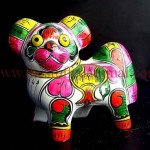
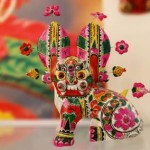
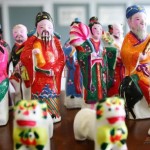
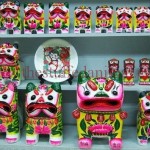
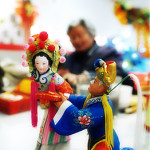
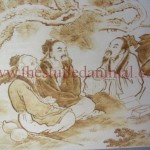
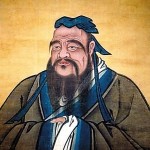
发布产品咨询